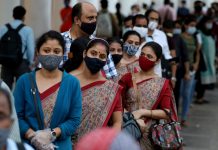The World Health Organization (WHO) has criticised what it describes as a “shocking imbalance” in the distribution of coronavirus vaccines between rich and poor countries.
The group’s chief said a target of seeing vaccination programmes under way in every country by Saturday.
The WHO has long called for fairer distribution of Covid-19 vaccines.
It is leading the Covax scheme. The main aim of this scheme is to get jabs to poorer nations.
This scheme delivered more than 38 million doses to around 100 countries.
Covax hopes to deliver more than two billion doses to people in 190 countries in less than a year. In particular, it wants to ensure that 92 poorer countries will receive access to vaccines at the same time as wealthier countries.
What did the WHO say?
“There remains a shocking imbalance in the global distribution of vaccines,” WHO Director General Tedros Adhanom Ghebreyesus told a news conference on Friday.
“On average in high-income countries, almost one in four people have received a Covid-19 vaccine. In low-income countries, it’s one in more than 500,” he said.
The Covax scheme expects to distribute at least 100 million doses worldwide by the end of March, but only 38 million jabs have been delivered so far.
“We hope to be able to catch up during April and May,” Dr Tedros said.
He also criticised countries that have sought their own vaccine deals outside of the Covax scheme. “Some countries and companies plan to do their own bilateral vaccine donations, bypassing Covax for their own political or commercial reasons,” Dr Tedros said.
“These bilateral arrangements run the risk of fanning the flames of vaccine inequity,” he added. “Scarcity of supply is driving vaccine nationalism.”
Earlier this year, Dr Tedros warned that the world was facing a “catastrophic moral failure” over vaccine inequality. He said a “me-first” approach would be self-defeating because it would encourage hoarding and prolong the pandemic.
So how fair is the vaccine situation?
Vaccines produced in the UK, US, Europe, Russia and China are already being widely used, having been bought up and approved in countries around the world.
But doses have not been shared equally between countries.
High-income countries currently hold a confirmed 4.6 billion doses, while low-middle income nations hold 670 million, according to research by the Duke Global Health Innovation Center.



























